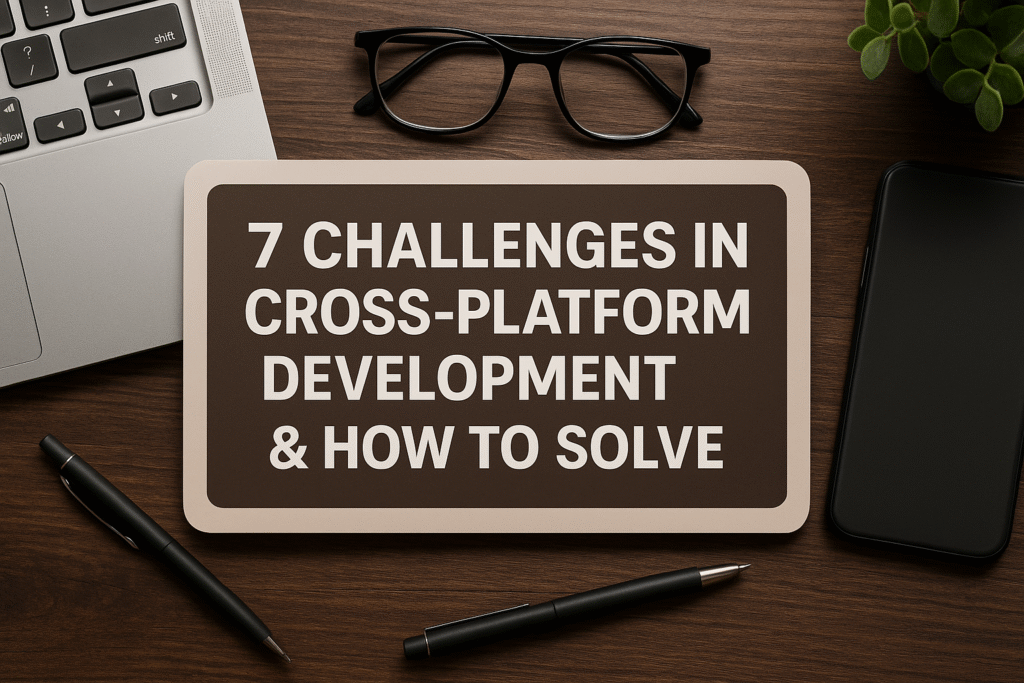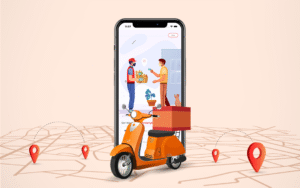
Cross-platform mobile app development has emerged as a popular strategy for businesses aiming to reach both iOS and Android users without the need for separate, costly native development teams. Frameworks like Flutter, React Native, and Kotlin Multiplatform Mobile (KMM) promise faster development cycles, reduced costs, and a unified codebase.
However, this approach isn’t without its hurdles. A discerning Mobile App Development Company understands these challenges and employs robust strategies to overcome them, ensuring the delivery of high-quality, performant, and maintainable applications.
Here are 7 main challenges in cross-platform development and practical ways to solve them:
1. Performance and Responsiveness Limitations
While cross-platform frameworks have made significant strides, achieving truly native-like performance and responsiveness can still be a challenge, especially for graphically intensive apps, complex animations, or apps with heavy data processing. The abstraction layer between the code and the native components can sometimes introduce overhead.
Challenges:
- Slightly Slower Performance: The framework’s bridge or rendering engine might introduce minor delays compared to direct native execution.
- Battery Consumption: Poorly optimized cross-platform apps can sometimes consume more battery due to inefficient resource management.
- Laggy UI/UX: Complex animations or rapid UI updates might not feel as smooth as their native counterparts.
Solutions:
- Choose the Right Framework: Select a framework known for performance (e.g., Flutter compiles to native code, React Native is improving with its new architecture).
- Optimize Code and Assets: Write efficient, clean code. Optimize images, videos, and other assets to reduce app size and loading times.
- Leverage Native Modules/Bridges: For performance-critical functionalities or access to specific hardware, develop native modules in Swift/Objective-C (iOS) or Kotlin/Java (Android) and bridge them to the cross-platform codebase.
- Minimize Network Requests & Caching: Implement efficient data fetching and caching strategies to reduce reliance on network latency.
- Profile and Optimize: Use performance profiling tools to identify bottlenecks and optimize code sections causing slowdowns.
2. Achieving Native UI/UX Consistency
Each mobile operating system (iOS and Android) has its own distinct design language, navigation patterns, and user expectations (e.g., Material Design for Android, Human Interface Guidelines for iOS). Replicating these nuances perfectly with a single codebase can be tricky.
Challenges:
- Generic Look and Feel: Apps might look and feel similar across platforms, potentially alienating users accustomed to platform-specific UI patterns.
- Gesture Differences: Standard gestures and navigation elements can differ between iOS and Android.
- Platform-Specific Components: Difficulty in rendering certain platform-specific UI components accurately or easily.
Solutions:
- Design System for Both Platforms: Create a comprehensive design system that accounts for both iOS and Android guidelines, specifying platform-specific variations for UI elements and interactions.
- Conditional Rendering: Use conditional logic in the codebase to render different UI components or apply different styles based on the operating system.
- Leverage Framework-Specific Widgets/Components: Modern cross-platform frameworks offer extensive widget libraries that often mirror native components and can be customized to achieve the desired look and feel.
- Prioritize UX Over Strict UI Duplication: Focus on a consistent user experience and functionality rather than pixel-perfect UI replication if it compromises usability on either platform.
- User Testing: Conduct extensive UI/UX testing with actual users on both platforms to gather feedback and refine the interface.
3. Limited Access to Native Device Features
While cross-platform frameworks provide access to many common device features (camera, GPS, accelerometer), accessing highly specialized or newly released native APIs and hardware capabilities might be limited or require workarounds.
Challenges:
- Delayed API Support: New OS features or updates might not be immediately supported by cross-platform frameworks.
- Complex Integrations: Integrating with niche hardware (e.g., specific IoT devices, custom sensors) can be more challenging.
- Third-Party SDK Compatibility: Some third-party SDKs might be primarily built for native environments, making integration with cross-platform apps complex.
Solutions:
- Use Native Modules/Plugins: For functionalities not directly exposed by the framework, develop custom native modules (in Swift/Objective-C or Kotlin/Java) and create a bridge to communicate with your cross-platform code.
- Community Plugins: Leverage the vast open-source communities. Many specialized native features already have community-contributed plugins available for cross-platform frameworks.
- Strategic Framework Choice: If the app heavily relies on bleeding-edge native features or specific hardware, a “native-first” or hybrid approach (like KMM for shared logic) might be more suitable.
- Stay Updated: Keep the chosen framework and its plugins updated to benefit from new native feature integrations.
4. Debugging and Testing Complexity
Testing a cross-platform application means ensuring consistent behavior and performance across multiple devices, screen sizes, OS versions, and, crucially, two distinct operating systems. This can make debugging and quality assurance more complex.
Challenges:
- Environment Setup: Setting up and managing diverse testing environments (simulators, emulators, physical devices for both iOS and Android).
- Platform-Specific Bugs: Bugs might appear on one platform but not the other, or behave differently due to underlying native differences.
- Debugging Across Layers: Debugging issues that span the cross-platform code and native modules can be more challenging.
- Automated Testing: Setting up robust automated testing suites for two platforms from a single codebase.
Solutions:
- Comprehensive Test Strategy: Develop a detailed test matrix covering various devices, OS versions, and network conditions for both platforms.
- Utilize Emulators and Real Devices: Test on a combination of emulators/simulators for initial development and real devices for critical performance and UI testing.
- Automated Testing Frameworks: Implement automated unit, integration, and UI tests using framework-specific tools (e.g., Flutter Driver, React Native Testing Library, Detox, Appium).
- Continuous Integration/Continuous Delivery (CI/CD): Automate the build, test, and deployment processes to catch bugs early and ensure consistent quality across platforms.
- Detailed Logging and Monitoring: Implement robust logging in the app to capture issues on both platforms and use crash reporting tools.
5. Managing Updates and Ecosystem Changes
Both iOS and Android ecosystems evolve rapidly, releasing new OS versions, hardware, and guidelines annually. Cross-platform frameworks must constantly adapt to these changes, which can sometimes lead to delays or compatibility issues.
Challenges:
- Framework Latency: Delays in cross-platform framework updates to support the latest OS features or address breaking changes.
- Dependency Management: Keeping all third-party packages and the framework itself updated to avoid security vulnerabilities or compatibility issues.
- Deprecation of APIs: Native APIs used in bridged modules might be deprecated, requiring updates to the native code.
Solutions:
- Stay Informed: Monitor official releases and developer blogs for both iOS and Android, as well as updates from your chosen cross-platform framework.
- Regular Updates: Plan for regular maintenance cycles to update the framework, libraries, and native modules to ensure compatibility and leverage new features.
- Proactive Planning: Anticipate major OS releases and allocate resources to test and update the app accordingly.
- Lean Dependencies: Minimize reliance on too many third-party libraries to reduce update overhead.
6. Team Skill Set and Learning Curve
While cross-platform development promises a “write once, run anywhere” ideal, a successful team still needs a blend of skills. Relying solely on developers familiar with one language can lead to gaps when native-specific issues arise.
Challenges:
- Hybrid Skill Set: Teams need proficiency in the chosen cross-platform framework’s language (e.g., Dart for Flutter, JavaScript/TypeScript for React Native) but also a foundational understanding of native development (Swift/Kotlin/Java) for troubleshooting or custom module creation.
- Finding Experienced Developers: Locating developers proficient in a specific cross-platform framework and knowledgeable about native intricacies can be challenging.
- Debugging Native Issues: Developers primarily familiar with the cross-platform layer might struggle to diagnose and fix deep-seated native performance issues or crashes.
Solutions:
- Invest in Training: Provide ongoing training for your development team in both the chosen cross-platform framework and foundational native development concepts.
- Diverse Team Composition: Build a team that includes cross-platform specialists, but also assign native iOS and Android developers to the project for expert support and custom module development.
- Leverage a Full-Service Mobile App Development Company: Partnering with an experienced Mobile App Development Company that has expertise in both cross-platform and native development can provide the necessary skill breadth.
- Knowledge Sharing: Foster a culture of knowledge sharing and collaboration between cross-platform and native developers.
7. Build Size and App Footprint
Cross-platform apps can sometimes result in larger file sizes compared to their native counterparts due to the inclusion of the framework’s runtime, libraries, and an additional abstraction layer.
Challenges:
- Larger Download Size: Can deter users, especially those with limited data plans or storage.
- Increased Storage Consumption: Takes up more space on the user’s device.
- Impact on Performance: Larger app size can sometimes correlate with slower load times.
Solutions:
- Optimize Resources: Compress images, videos, and other assets. Remove unused code and resources.
- Minimize Dependencies: Only include necessary third-party libraries and remove any unused ones.
- Code Splitting/Lazy Loading: Implement techniques to load only essential code and assets initially, and download others on demand.
- Framework-Specific Optimizations: Utilize built-in tools and best practices provided by the framework for size reduction (e.g., Flutter’s
flutter build appbundle, Android App Bundles, iOS app thinning). - Consider Core Functionality: Prioritize core features in the initial app release to keep the size down, then add more features in subsequent updates.
Conclusion
Cross-platform mobile app development offers undeniable advantages in terms of speed, cost, and code reuse. However, it’s crucial to acknowledge and proactively address the inherent challenges. By adopting smart strategies for performance optimization, UI/UX consistency, native feature access, rigorous testing, continuous updates, and effective team management, a Mobile App Development Company can successfully navigate these complexities. The key lies in strategic planning, robust execution, and a commitment to quality, ensuring that the benefits of cross-platform development translate into successful, high-performing applications that delight users on both major mobile platforms.



